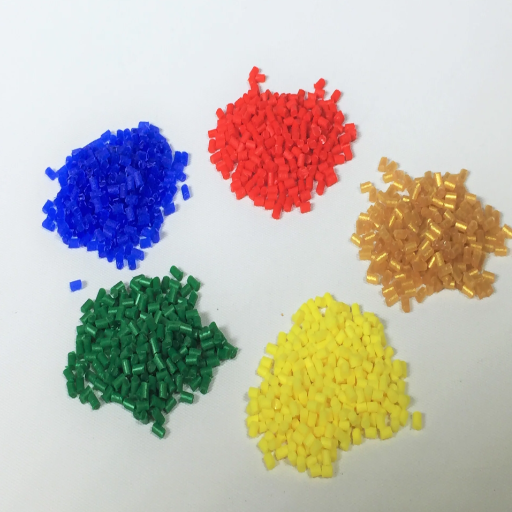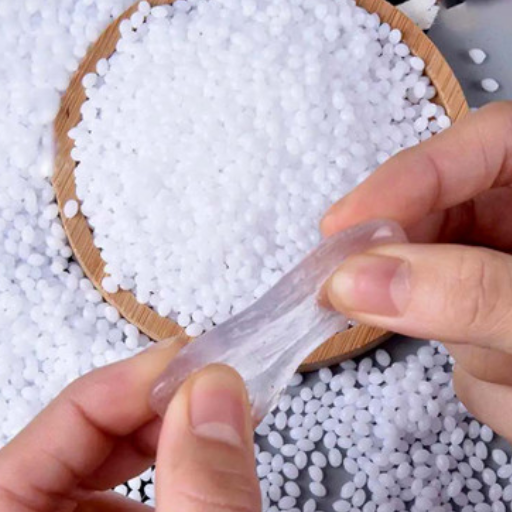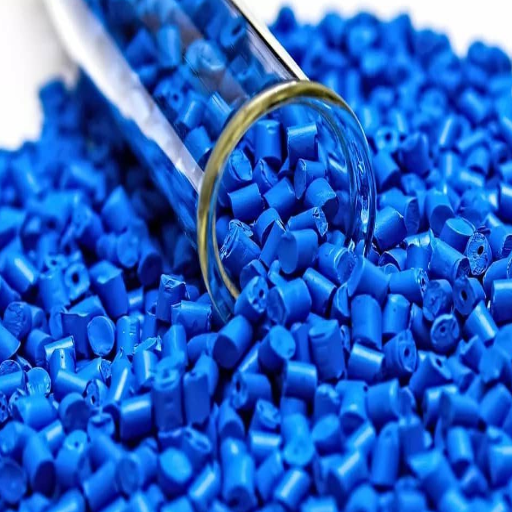Each industrial and commercial application must assess its specific properties, purposes, and anticipated applications. A thermoplastic elastomer called thermoplastic vulcanizates (TPVs) and ethylene propylene diene monomer (EPDM) are widely used materials, each with distinctive features and benefits ideal for different uses. This article offers a general comparative study of TPVs and EPDM and covers their physical and chemical characteristics, standard uses, and advantages. These differences and similarities help manufacturers and engineers utilize and issue solutions that combine the necessary design and performance features.
Understanding the Core Composition of TPV and EPDM
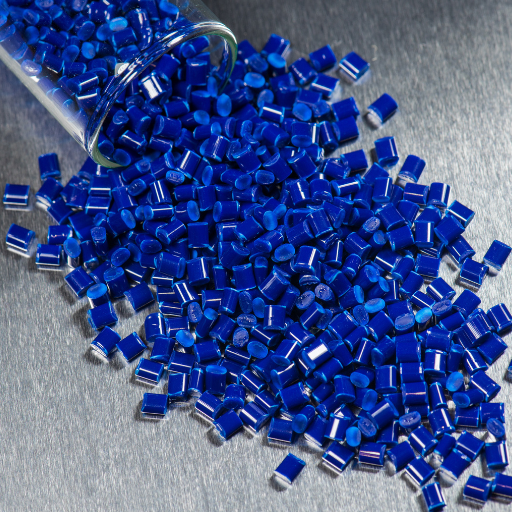
TPV has unique properties as it offers elasticity along with processability as it is a hybrid composite made from a thermoplastic vulcanizate and a thermoplastic matrix. TPV is effective in automotive components such as seals, gaskets, and flexible components due to its remarkable resistance to weathering, chemicals, and fatigue. EPDM, or Ethylene Propylene Diene Monomer, is a synthetic rubber with a high degree of resistance to extreme heat, weather conditions, and ozone and is recommended for use in applications such as roofing membranes, automotive weather stripping, and hoses. With EPDM, you get more durability in extreme weather but TPV can be molded more easily and reused again.
What Makes TPV a Unique Thermoplastic Elastomer?
What differentiates TPV is its structural modification of everyday vulcanized rubber by combining it with thermoplastic so that it is elastic but can also be processed like a thermoplastic polymer. This structure greatly assists TPV in providing exceptional properties such as flexibility, durability, and anti-degradative qualities.
Technical parameters that justify its uniqueness include a wide operating temperature range (typically -40degC to 125degC), outstanding resistance to UV radiation, ozone, and chemicals, and superior fatigue resistance under dynamic stress. Furthermore, the melt processability of TPV means it can be easily molded, extruded, or recycled, unlike traditional thermoset rubbers. TPV suits areas requiring durability, extensive usage, and sensible production cost with these characteristics.
Key Components That Define EPDM Rubber
EPDM (Ethylene Propylene Diene Monomer) elastomer characteristically possesses ethylene and propylene monomers and diene, which can introduce unsaturation for vulcanization. Such microstructure accounts for its property of being chemically inert to ozone and UV light and its weathering resistance. Technical parameters include an operating temperature range of -40degC to 150degC, a good degree of flexibility and elongation at break, and resistance to polar solvents, acids, and alkalis. Also, the properties of EPDM that have low electric conductivity and water impermeability characteristics are requisite in electrical and automotive industries which entail good insulation and sealing. This conjugation guarantees durability and versatility.
How Are Their Chemical Structures Different?
The ethylene, propylene, and non-conjugated diene polymers that make up EPDM rubber’s chemical structure allow cross-linking while vulcanized. The diene’s involvement further improves the tensile strength and ability to sulfur vulcanize. The rubber’s ethylene and propylene-rich saturated backbone molecular structure makes it easy for it to resist ozone, UV, and heat.
On the other hand, polyisoprene, a cis-1,4-polyisoprene structure, is the main constituent of natural rubber (NR). As a result of its unsaturated molecular structure, it possesses good elasticity and tensile strength but is highly prone to oxidation, ozone, and UV radiation in the absence of stabilizing additives. In contrast to EPDM, natural rubber does not have a saturated backbone, thus making it weaker to bad weathering.
Technical Parameters Comparison:
- EPDM Rubber:
- Operating Temperature Range: -40℃ to 150℃
- UV and Ozone Resistance: High (due to saturated backbone)
- Chemical Resistance: High to polar solvents, acids, alkalis
- Tensile Strength: Moderate
- Natural Rubber (NR):
- Operating Temperature Range: -50℃ to 90℃
- UV and Ozone Resistance: Low (requires stabilizers)
- Chemical Resistance: Limited to non-polar substances
- Tensile Strength: High (superior resiliency)
The above-mentioned variances highlight the parts of EPDM suitable for extended exposures to outdoor conditions and big temperature fluctuations. In contrast, NR does, however, provide maximum performance for indoor environments that are less harsh and expose the product to a regulated mechanical load.
Exploring the Durability of TPV and EPDM in Various Environments
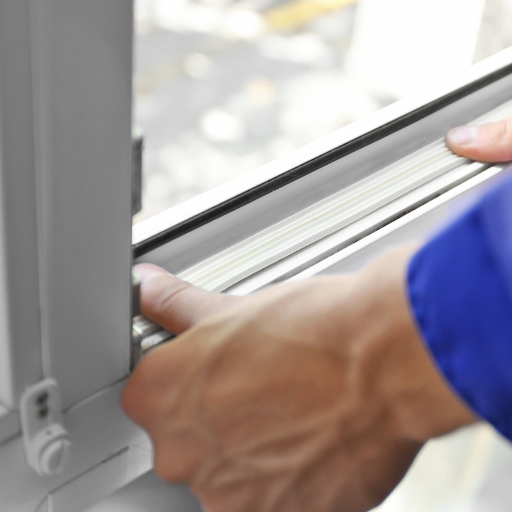
Thermoplastic Vulcanizates (TPV) and Ethylene Propylene Diene Monomer (EPDM) have exceptional performance in various structural applications and are commercially available in the market. TPV has excellent flexibility and hydrocarbon resistance, making it suitable for automotive seals where oils and fuels are present. TPV also has excellent re-usability and thermal stability from -40℃ to 135℃ making it reliable for varying climate conditions. As for procured EPDM, saturated molecular modality ensures better UV and ozone weathering resistance, and as such, it can be effective for outdoor applications like roofing membranes or electrical insulation. On the other hand, there are limitations with EPDM when it comes to chemical resistance with hydrocarbon, TPV is more resistant when exposed to such conditions. In the end, both EPDM and TPV will perform well, final decision is based on application and environmental specifications.
What is the Effect of Cold and Hot Temperatures on both TPV and EPDM?
Setting aside the reasons, TPV and EPDM appear to respond differently when exposed to very high and low temperatures, apparently owing to the physical properties of the two materials. First, TPV can work for a very wide temperature span that extends from -40 to 135 centigrade while possessing flexibility and mechanical strength. Besides, it can accommodate high flexural thermal loads, which helps metal fatigue when thermoplastic and elastomeric phases are created. Additionally, TPV does not get brittle when expecting flexural thermal loads below sub-zero, which is a vital consideration to retain performance in the automotive and industrial sectors.
Unlike TPV, EPDM also covers a broad range at low to moderate temperatures, which are anywhere between -50 degrees centigrade and 150 degrees centigrade. Second, EPDM has a slow backbone structure which can mitigate degradation resulting from extreme heating conditions over a long period and still be able to retain its elasticity and weathering properties. However, long periods at extreme heat, for example, may result to hardening or cracking if extended over the upper thermal limit. Properties of EPDM can withstand extreme weather, making it ideal for roofing or insulation. Given all of the above, the two materials appear to show strong thermal properties but it would come down to choosing one over the other considering the temperature ranges and environmental conditions applicable to the specific use cases.
UV, Ozone and Weathering Resistance: A Comparaive Assessment
Vulcanized Fiber (TPV) and Ethylene Propylene Diene Monomer (EPDM) are both UV, ozone, and weathering-resistant materials that can be used outdoors and for applications that create a high impact. TPV provides superior endurance for resistance to UV as well. Since it is a co-polymer, it is not prone to surface cracking and degradation over time. An additional advantage of this property is sufficient for use in automotive seals or external parts being made from it since they are lead to constant exposure to sunlight.
Even EPDM, which has a saturated backbone polymer, also constitutes a tough resistance against UV radiation and ozone, thus not allowing surface oxidization and mechanical stability for long. Weathering results from being UV resistant in its stable chemical form thus increasing the chances of the material not breaking down in extreme weather. Phase change materials were, however, noted to have some additional detrimental impact on the performance of EPDM at high UV applications.
Although ozone cracking of both TPV and EPDM is quite prevalent, TPV, which is chemically enhanced, will have much better long-term performance, especially if it’s recycled or thermally bonded formulations. In circumstances wherein TPV and EPDM are both suitable, TPV is often favoured for UV and ozone-resistant applications, but for weathering-resistant applications, EPDM is preferred for its low cost.
Which Of The Two Materials Lasts Forever Or Provides Longevity?
EPDM and TPV must be considered based on the requirements to determine long-term durability for a specific application. TPV provides a clear competitive advantage n demanding application due to its distortion, thermal and advancing aging properties, especially when recycled or dynamically bonded. EPDM, on the other hand, has great resistance against ozone and UV rays whilst being a cost-effective solution in less severe situations. Even though both are very durable, TPV is well-liked in cases that require long life and strong impact resistance, while EPDM is suitable for use in cost-effective general burden weatherizing solutions.
Processing and Manufacturing Differences Between TPV and EPDM
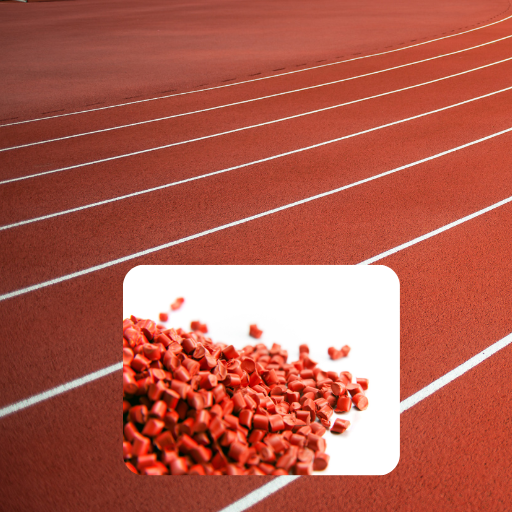
The processing and manufacturing techniques used for TPV and EPDM are quite different. TPV is synthesized via the dynamical vulcanization route, thereby producing a composite material that possesses rubber-like elasticity and the processing ease of thermoplastics. This means that it can be shaped by stamping, molded, extruded or easily sacrificed for recycling purposes, thus enabling cost-effective production for a wide range of custom high-end applications. On the other hand, TPV is produced by the conventional method of vulcanizing rubber. This process increases its toughness and elasticity at the expense of its potential sintering and its ability to be processed into various forms. Moreover, one of the advantages of TPV is that it generally has a shorter production cycle and fewer material constraints when designing complex shapes. On the other hand, EPDM is most effectively processed with simple (but reliable) compounds to resist weathering effects. All these manufacturing technologies have certain consequences and dependencies in terms of the parameters of the materials and their intended applications.
What Makes Large Scale Production More Feasible with TPV?
Due to its thermoplastic characteristic, TPV is much simpler for high-output endeavors, allowing mass production methods like extrusion, blow molding, or injection molding to be employed. This strategy enables increased efficiency while simplifying the production process. Moreover, the two-stage integration of vulcanized rubber within the thermoplastic structure enhances the material’s flow properties, making the volumetric production more reliable and faster. Furthermore, TPV has a large manufacturing temperature of about 180℃ to 230℃, making it easy to work with. The material is also recyclable which helps reduce expenses in mass production as wastage can be circulated back without affecting the makeup too much. These qualities allow TPV to be used in products that require seals, gaskets, or automotive parts.
The Contribution of Vulcanization in Production of EPDM
The procedure for making EPDM rubber involves vulcanization, which improves the physical and thermal characteristics of the rubber to withstand extreme conditions. Using sulfur or other coagulated agents makes it possible to vulcanize rhe polymers that make up the ddm backbone mix. This cross-linking enhances the network regarding elasticity, tensile strength, resistance, or exposure to heat, weathering, and chemicals. All these factors help to increase the strength of epdm and its effectiveness in diverse constructions, including roofing membranes, automotive parts, machine seals and o-rings.
Comparing Usefulness Cost In Manufacturing
While determining the cost usefulness of manufacturing, the material characteristics and the efficiency of the process factors have to be considered. Thermoplastic vulcanizates (TPVs) are considerable from the cost point of view as they can be recycled and easy to make; hence, the waste of material is reduced, and the cycle time with injection molding is quick. Also, EPDM can be of great use as it helps save costs due to its long life, providing resistance to environmental conditions, thereby not requiring replacement or maintenance often. In the end, it is the specific requirements and expected efficiency in the long run that determine the best and most economical alternative to be used.
Applications of TPV and EPDM Across Industries
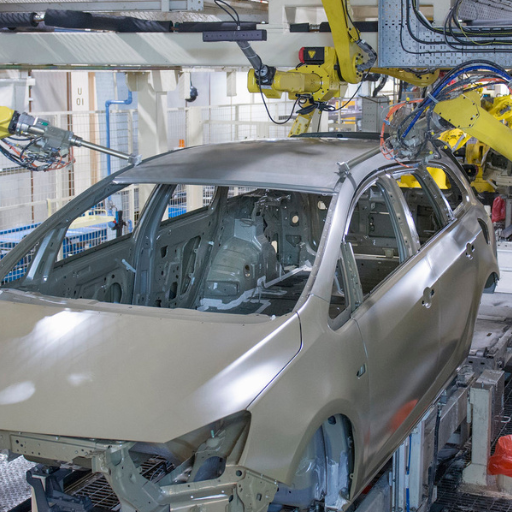
TPVs are widely used in the automotive sector for weather seals, air ducts, and bellows since they are easily adaptable, lightweight, and resist extreme conditions and stress. In the same way, EPDM is most commonly used for automotive weather stripping, coolant hoses, and car gaskets due to its excellent thermal stability and ozone resistance. Apart from the automotive sector, TPVs are preferable in consumer products and electrical equipment because of their ease of processing, and EPDM is necessary for roofing systems and electrical insulation because of its ability to resist harsh environments and great elongation. Both materials are suitable for diverse applications in the automotive and non-automotive industries and commercial use.
Common Automotive Applications of TPV and EPDM
- Weather Seals: ETPVs are commonly used for automotive weather seals due to their good fatigue resistance, flexibility, and ability to withstand extreme weather. They serve as a lightweight and recyclable substitute for rubber.
- Air Ducts: TPVs’ application in air ducts is particularly useful for modern automotive engineering, reducing vehicle weight and enhancing fuel economy. Due to their thermal and strength properties, TPVs are also useful for managing airflow between varying temperatures.
- Bellows: The bellowing industry is one of the strongest suppliers for TPVs. This is simply due to its elastic attributes and wear resistance, which allow it to withstand multiple movements and vibrations.
- Weatherstripping: Due to its greater resistance to ozone, UV rays, and high temperatures, the automotive industry has adopted EPDM as the go-to weather stripping, which minimizes the noise and vibrations inside the vehicle while ensuring a good seal.
- Coolant Hoses: EPDM is able to resist a wide heat range and has the longevity required from coolant hoses, which allows it to be used in tighter engine cooling systems.
- Car Gaskets: In automotive engines, EPDM-based gaskets act as effective sealing materials due to their excellent oil and fluid resistance and compression set resistance. Their strength and durability help retain performance in difficult environments.
Where Do These Materials Shine in Construction and Roofing?
Thermoplastic Vulcanizates (TPVs) and Ethylene Propylene Diene Monomer (EPDM) have been widely adopted in the construction and roofing industries because of their favorable performance attributes. EPDM is a top choice for a single-ply roofing membrane because it can endure temperatures between -40 and 300 degrees and has high ozone and UV radiation resistance. These characteristics guarantee a long service life, low maintenance requirements, and ease of application, even in harsh climatic conditions. On the other hand, TPVs are also used in roofing applications where durable flexible seals and membranes are required and can withstand the weather. Waterproofing features of the two materials also enhance the structural strength of buildings; furthermore, EPDM’s elongation surpasses 300%, allowing it to efficiently accommodate building movements and expansion due to heat.
Specialty Uses in Consumer Products and Industrial Equipment
- Automotive Seals and Hoses: EPDM and TPVs have valuable applications in the automotive sector. They are used to make weather seals, radiator hoses, and brake system parts. They are long-lasting and can withstand heat, ozone, aging, and other harsh conditions.
- Electrical Insulation: These materials insulate electricity well in wire and cable coatings applications. Because of EPDM’s dielectric and thermal properties, it is useful in electrical systems by safeguarding them from external factors.
- Appliance Components: EPDM materials are used in home appliances, such as gasket seals and hoses that are resistant to water, steam, and detergent chemicals. Similarly, TPVs retain flexibility and resilience in high-stress conditions in washing machines and dishwashers.
- Industrial Belting: Both materials are used to make industrial belts, where their wearing characteristics, flexibility, and physical dimensions are necessary for their optimum functioning.
- Flexible Tubing and Pipe Seals: TPVs are lightweight and flexible, making them suitable for piping and medical tubing applications. They are also ideal in industrial and healthcare applications as they withstand different amounts of pressure and temperature.
- Roofing and Weatherproofing Accessories: In addition to membranes or gaskets, EPDM and TPVs are useful as corner flashing, pipe boots, expanding joints, and other parts of the roofing system to provide efficient waterproofing and weatherproofing.
- Sports and Playground Surfaces: EPDM is a pivotal component in developing elastic, weather-resistant, premium shock-absorbing, and UV-resistant coatings for running tracks, playgrounds, and sports fields.
- Transportation Flooring: EPDM and TPVs are employed in the flooring of mass transit systems owing to their lower wear, slip, and flammability, which enables them to be installed in heavy traffic and fire-critical areas.
Comparing Flexibility and Elasticity of TPV and EPDM
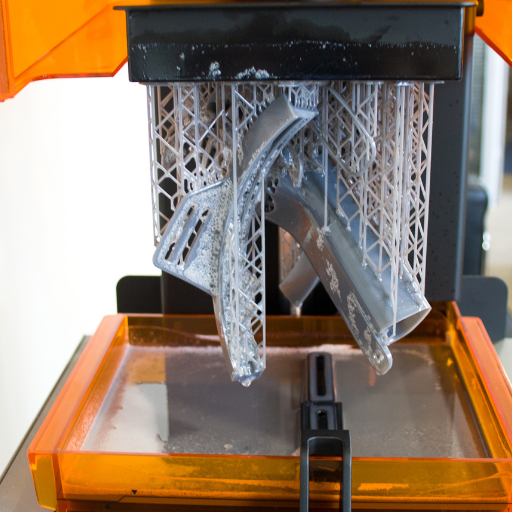
Both TPV and EPDM serve different end goals when considering the questions of flexibility and elasticity, respectively. TPVs, being thermoplastic elastomers, offer the practicality of being easily processed like thermoplastics yet retaining the properties of traditional rubber. Such features make TPVs elastic and more durable than other synthetic materials used to create them, and they cut down the manufacturing time with the added possibility of molding thermoplastic elastomers. Unlike TPVs with plenty of room for deformation; EPDM is classified as a thermoset and holds up well against elastic deformation, especially at low temperatures. This is desirable for use cases where the elastomer is being stretched, as it will return back to its original shape after being released. Although TPVs and EPDM are distinct materials that can operate in different environments and contexts, TPVs can be said to be easier to work with. In contrast, EPDM can handle higher amounts of stress and has better durability.
How TPV Sustains Its Volume Properties in Motion
TPV’s unique composition and structure allow it to remain elastic in dynamic applications. Thermoplastic elastomers formed from cross-linked rubber particles in a thermoplastic matrix can withstand repeated stresses and deformations without any permanent set. This coupling makes it possible for TPV materials to flex and return every time to their nominal shape, providing elasticity and elasticity with time as well, for dynamic loading. In addition, its molecular design improves thermal stability, enabling performance in conditions with varying temperatures and mechanical stresses. Such characteristics make TPV suitable for applications exposed to continuous motion and ideal flexibility.
EPDM’s Resilience for Seals and Insulation
EPDM provides excellent sealing and insulation and its flexible properties as it is a poor performer at critical temperatures, ozone, UV rays and weathering. Its molecular structure is such that it can never outgrow rigidness under extreme temperatures, hence it is extensively used in automotive weather sealings, roofing membranes and industrial gaskets. It has also been able to outlast static and dynamic conditions due to its strong portability, therefore it has numerous applications in insulation and sealing tasks requiring great endurance.
In What Scenarios is it Appropriate to Emphasize Elastic Recovery for Material Selection?
Various features determining elastic recovery could be sought during material selection, where the said material must regain or restore its volume and shape when mechanical deformation is removed. In this case, dynamic sealing, vibration dampening or any other application where periodic mechanical stresses are enforced on the material can be considered. High elastic recovery is able to enhance performance and durability indexes which are especially essential in cases such as automotive seals where it is critical to have a tight fit even after thermal expansion occurs. Indicators such as tensile strength, compression set (ASTM D395), and elongation at break need to be referenced on a more technical level. Ilan further posits that polymers such as EPDM or TPV with set compression values under 20% can retain sufficient sealing efficiency for ideal time frames. Provided attributes, these materials can also engineer reliable load-bearing support under varying operating conditions without sustaining any permanent discontinuities.
Environmental and Sustainability Considerations
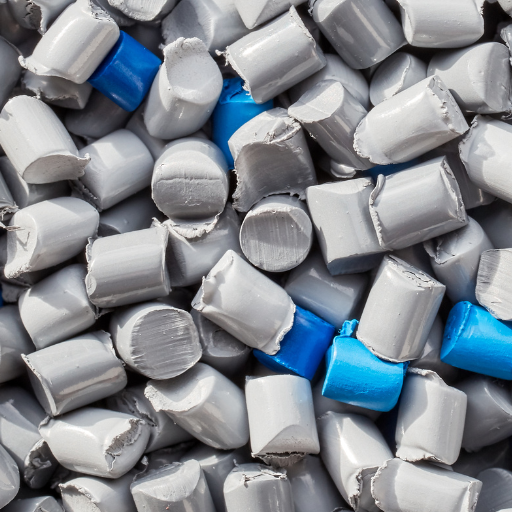
In order to address the issue succinctly, it is possible to say that elastic recovery is critical in applications where there is a need for elastic deformation and return to the original state to ensure its not malfunction. Silicone rubber or thermoplastic elastomers are among the materials that display high elastic recovery due to the cyclic stress that is applied to them at the molecular level so that they do not get deformed permanently. Key factors to account for would be the working conditions, tolerance limits on the stress level imposed and variation on material due to temperature changes. Any positive contribution brought by high elastic recovery materials would be concerning alleviating the service life limit, cutting back on the amount of maintenance activities, and perhaps more importantly, preserving the performance during harsh environments with extreme conditions and scenarios.
Can TPV’s Recyclability Reduce Material Waste?
TPV’s recyclability has such potential.IN VITROthermoplastic vulcanizates have been a totally different process when it comes to recycling because they are TPEs, they on the other hand have great potential to be recycled compared to thermoset rubbers. This reprocessing ability feature facilitates the reduction of waste during the production phase as well as when the product has been used. Moreover, the employment of recycled TPV in the production process reduces the use of virgin TPV, decreasing resource consumption and the associated pollution from solid disposal of raw materials. Reconsidering TPV in this context is possible, as the performance characteristics that allow reasonable cooperation are preserved when integrating within the framework of a circular economy model.
The Influence Greenhouse Gases Made by the Manufacturing and Use of EPDM
The manufacture and use of EPDM technology plastic opens both green opportunities and hush concerns. The process includes worthy energy consumption and the use of oil-based feedstock raw materials, which cause global warming and the depletion of resources. These enabled some of the impacts to have been controlled, such as the emissions of volatile organic compounds, while advances in the manufacturing processes have seen this. Even further, the lifespan of the EPDM and the resistance to weathering increases product life; hence, replacement rates and waste resulting from these are lowered. As to the specific parameters of the polymer, EPDM density is falling within the 0.86 – 2.2 g/cm³; tensile strength 7 – 21 Mpa; elongation at break is 300% and above which serves to show its efficiency as performance material. However, while EPDM compounds consumer goods are being developed which contain a percentage of recycled materials, EPDM material is thermoset, which is more difficult to recycle than thermoplastics. Increasing green substitutes and better recycling practices is the surest way to minimize environmental impacts.
How Do These Materials Align with Sustainability Goals?
These materials aim to contribute to sustainability by reducing the use of resources while using non-biodegradable waste and collecting renewable or recyclable input. As far as possible, they are intended to have a less damaging effect on the environment through reduced emissions, longer service lives, and operations consistent with the principles of the circular economy. There is a greater responsibility concerning the environment when it comes to more sustainable forms of production as well as the management of the end-of-life cycle of the products.
Reference sources
Frequently Asked Questions (FAQs)
Q: What are the main differences between TPV and EPDM rubber granules?
A: TPV (Thermoplastic Vulcanizate) and EPDM (Ethylene Propylene Diene Monomer) rubber granules have several key differences. TPV offers better color stability, higher durability, and improved resistance to wear and tear compared to EPDM. TPV also has better adhesion properties and can be more easily recycled. EPDM, on the other hand, is generally less expensive and has been used in the industry for a longer time.
Q: How does the hardness of TPV compare to EPDM?
A: TPV typically offers a wider range of hardness options compared to EPDM. The durometer (hardness) of TPV can be adjusted more easily during manufacturing, allowing for greater flexibility in product design. This makes TPV suitable for applications requiring different levels of softness or rigidity, while EPDM tends to have a more limited hardness range.
Q: What are the advantages of using TPV rubber granules for playground surfacing?
A: TPV rubber granules offer several advantages for playground surfacing. They provide excellent impact absorption, superior UV resistance, and better color stability compared to EPDM. TPV surfaces also tend to be more durable, resist compression better, and maintain their properties over time. Additionally, TPV granules are non-toxic and environmentally friendly, making them a safe choice for children’s play areas.
Q: How do TPEs (Thermoplastic Elastomers) fit into the comparison between TPV and EPDM?
A: TPEs, including TPV, are part of the “TPE alphabet soup” of materials that combine the properties of rubber and thermoplastics. TPV is a specific type of TPE that offers improved performance over traditional EPDM in many applications. Other TPEs, such as TPU (Thermoplastic Polyurethane), also have their place in the market, each with unique properties suited for different uses.
Q: What are the cost implications of choosing TPV over EPDM?
A: Initially, TPV may have a higher cost per pound compared to EPDM. However, when considering long-term performance and lifecycle costs, TPV can be more cost-effective. Its superior durability, color stability, and resistance to wear and tear often result in lower maintenance and replacement costs over time. Additionally, the ability to recycle TPV can contribute to overall cost savings and environmental benefits.
Q: How does the surface porosity of TPV compare to EPDM?
A: TPV typically has lower surface porosity compared to EPDM. This characteristic makes TPV surfaces less likely to absorb water, oils, and other contaminants. As a result, TPV surfaces are generally easier to clean and maintain, and they tend to resist staining and degradation better than EPDM surfaces. The lower porosity also contributes to TPV’s improved color stability and overall longevity.
Q: Can TPV be used as a replacement for EPDM in existing applications?
A: Yes, TPV can often be used as a replacement for EPDM in many applications. The process of replacing EPDM with TPV, sometimes referred to as “EPDM to TPV conversion,” can lead to improved performance and longevity in various products. However, it’s essential to consider the specific requirements of each application, as there may be cases where EPDM remains the preferred choice due to cost or other factors.
Q: How do TPV and EPDM compare in terms of environmental impact?
A: TPV generally has a lower environmental impact compared to EPDM. TPV is more easily recyclable and can be reprocessed multiple times without significant loss of properties. This recyclability reduces waste and conserves raw materials. Additionally, TPV production often requires less energy than EPDM production. However, it’s worth noting that both materials can be formulated to meet various environmental standards, and the overall impact depends on the specific product and its lifecycle.
Q: What are the key advantages of TPV over EPDM in gasket applications?
A: In gasket applications, TPV offers several advantages over EPDM. TPV typically provides better compression set resistance, meaning it retains its shape and sealing properties better over time. It also offers improved chemical resistance, higher temperature resistance, and better weatherability. These properties make TPV gaskets more durable and longer-lasting, particularly in challenging environments. Additionally, TPV’s ability to be color-matched and its superior adhesion to various substrates can be beneficial in certain gasket designs.

